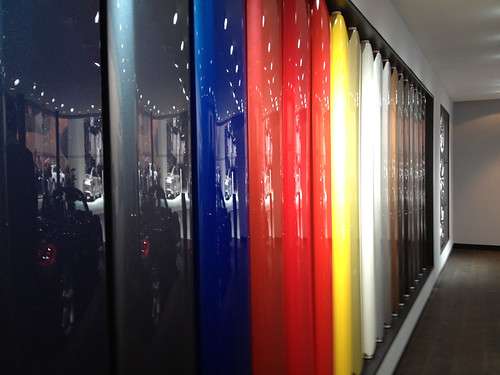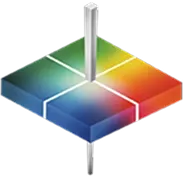Color measurement technology continues to advances and instrumentation is now being designed to meet industry standards and regulations. Image source: Flickr user Horia Varlan
Spectrophotometers eliminate many of the difficulties associated with visual assessment and color standards and are continually changing not only to meet the expectations of consumers but industry standards and regulations as well. These new standards undergo constant revision and are becoming more and more dependent on the latest technology in colorimetry and spectrophotometers. Newly engineered standards have led to major improvements in color quality control such as the single number shade passing (SNSP) system and total color difference, ΔE.
In addition to these advancements, organizations for quality control such as the USDA (United States Department of Agriculture) and the EPA (U.S. Environmental Protection Agency) are continually modifying standards and regulations for color use and technology. Spectrophotometer manufacturers must constantly adapt their products to meet these color measurement standards for numerous food products and environmental regulations in both the chemical and plastics industries.
Spectrophotometers eliminate many of the difficulties associated with visual assessment and color standards and are continually changing not only to meet the expectations of consumers but industry standards and regulations as well. These new standards undergo constant revision and are becoming more and more dependent on the latest technology in colorimetry and spectrophotometers. Newly engineered standards have led to major improvements in color quality control such as the single number shade passing (SNSP) system and total color difference, ΔE.
In addition to these advancements, organizations for quality control such as the USDA (United States Department of Agriculture) and the EPA (U.S. Environmental Protection Agency) are continually modifying standards and regulations for color use and technology. Spectrophotometer manufacturers must constantly adapt their products to meet these color measurement standards for numerous food products and environmental regulations in both the chemical and plastics industries.
Choosing the right instrumentation
Whether it’s foods, paints, coatings, or plastics, color and quality control are a necessity for keeping ahead of the competition. When looking for new or updated instrumentation that meets the growing standards and accurately measures a variety of materials, it is important to choose a company that develops a relationship with their client and the industry. HunterLab is a trusted name in color technology and spectrophotometers with an impeccable record in customer satisfaction and support. HunterLab knows and understands the client and respective market and works hard to meet the changes in a global economy. Contact HunterLab today and let us show you our commitment to the world of color.





